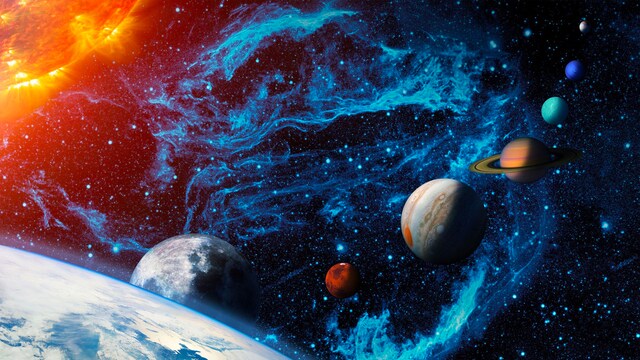Astronomers accidentally discover planets moving in harmony in rare star system
Astronomers have stumbled upon an exceptionally rare celestial occurrence in a nearby star system — six planets orbiting their central star in an intricate and synchronised rhythm, almost as if they were dancing to a tune
In a groundbreaking discovery, astronomers have stumbled upon an exceptionally rare celestial occurrence in a nearby star system — six planets orbiting their central star in an intricate and synchronized rhythm, a pattern so precise it can be translated into music.
The star system in question, HD110067, situated approximately 100 light-years away in the northern constellation of Coma Berenices, has been under the vision of NASA’s Transiting Exoplanet Survey Satellite.
In 2020, TESS detected fluctuations in the star’s brightness, signalling the transit of planets in front of it.
Related Articles

China outpacing NASA in space race, leaves US worried

NASA draws up plan to set up first permanent base on the Moon, ropes in Italian space agency to help
Collating data from TESS and the European Space Agency’s Cheops (CHaracterising ExOPlanet Satellite), a team of researchers made a groundbreaking revelation — a planetary configuration of unprecedented nature.
While multiplanet systems are relatively common in the galaxy, those exhibiting a tight gravitational formation known as “resonance” are exceedingly rare.
In this extraordinary case, the closest planet to the star completes three orbits for every two of the next neighbouring planet, constituting a 3/2 resonance. This pattern repeats among the four inner planets. As for the two outermost planets, a 4/3 resonance pattern was identified, signifying that one completes four orbits for every three of its outermost counterparts.
The significance of these “orbitally resonant” systems lies in their ability to provide crucial insights into the formation and evolution of planetary systems.
Typically, planets around stars tend to form in resonance, but external factors such as a massive planet, a close encounter with a passing star, or a significant impact can disrupt this delicate balance.
The newfound planetary harmony in HD110067 offers astronomers a unique window into the past, showcasing the initial conditions of planetary formation.
Many multiplanet systems, while not precisely in resonance today, exhibit patterns suggesting they may have once been in such a delicate celestial dance. This discovery underscores the fragility of planetary systems and the complex interplay of forces shaping the cosmos.

Astronomers have stumbled upon an exceptionally rare celestial occurrence in a nearby star system — six planets orbiting their central star in an intricate and synchronised rhythm, almost as if they were dancing to a tune
In a groundbreaking discovery, astronomers have stumbled upon an exceptionally rare celestial occurrence in a nearby star system — six planets orbiting their central star in an intricate and synchronized rhythm, a pattern so precise it can be translated into music.
The star system in question, HD110067, situated approximately 100 light-years away in the northern constellation of Coma Berenices, has been under the vision of NASA’s Transiting Exoplanet Survey Satellite.
In 2020, TESS detected fluctuations in the star’s brightness, signalling the transit of planets in front of it.
Related Articles

China outpacing NASA in space race, leaves US worried

NASA draws up plan to set up first permanent base on the Moon, ropes in Italian space agency to help
Collating data from TESS and the European Space Agency’s Cheops (CHaracterising ExOPlanet Satellite), a team of researchers made a groundbreaking revelation — a planetary configuration of unprecedented nature.
While multiplanet systems are relatively common in the galaxy, those exhibiting a tight gravitational formation known as “resonance” are exceedingly rare.
In this extraordinary case, the closest planet to the star completes three orbits for every two of the next neighbouring planet, constituting a 3/2 resonance. This pattern repeats among the four inner planets. As for the two outermost planets, a 4/3 resonance pattern was identified, signifying that one completes four orbits for every three of its outermost counterparts.
The significance of these “orbitally resonant” systems lies in their ability to provide crucial insights into the formation and evolution of planetary systems.
Typically, planets around stars tend to form in resonance, but external factors such as a massive planet, a close encounter with a passing star, or a significant impact can disrupt this delicate balance.
The newfound planetary harmony in HD110067 offers astronomers a unique window into the past, showcasing the initial conditions of planetary formation.
Many multiplanet systems, while not precisely in resonance today, exhibit patterns suggesting they may have once been in such a delicate celestial dance. This discovery underscores the fragility of planetary systems and the complex interplay of forces shaping the cosmos.
